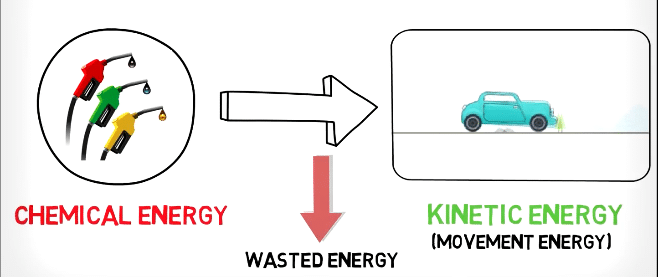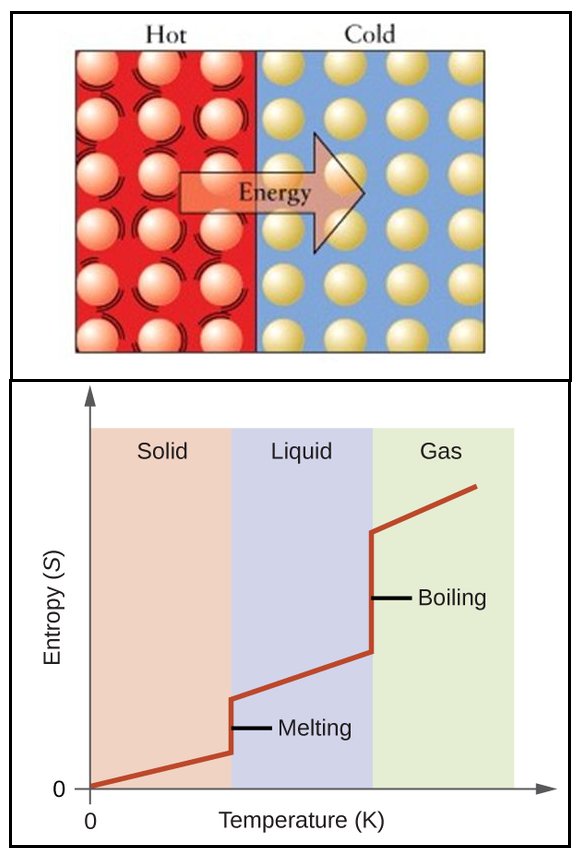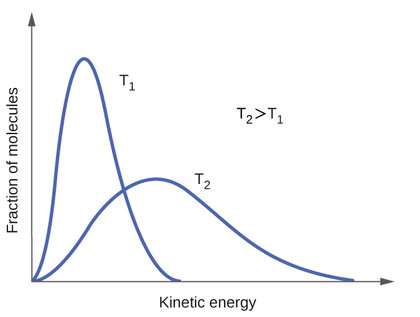The Laws of Thermodynamics
Grade 8 Science Worksheets
Introduction
Thermodynamics is primarily the study of the relationship between heat and other forms of energy. It extends to the study of the conversion of all forms of energy from one to another. The principles of thermodynamics are important to understand events that occur in nature, to design machines like engines and refrigerators, and to calculate the energy gain or loss in chemical reactions. There are two main laws or principles of thermodynamics.
The First Law of Thermodynamics
Let us first understand the meaning of a System. A system is anything from a simple object or a set of things working together as one interconnected mechanism. For example, a rope and pulley used to hoist equipment is a system. A nuclear reactor, a car’s engine, and even a simple metal object which conducts heat are all considered as systems for the purpose of thermodynamics.
The first law of Thermodynamics is the law of Conservation of Energy. It states that the energy in any System can neither be created nor destroyed. Instead, energy is either converted from one form to another or it is transferred from one system to another.
Schedule a Free session to clear worksheet doubts
No credit card required, no obligation to purchase.
Just schedule a FREE Sessions to meet a tutor and get help on any topic you want!

A gas turbine converts chemical energy in a fuel into thermal (heat) energy. The heat energy is then converted into mechanical energy to do some useful work, like powering an airplane. The total amount of energy from start to end of the working system remains the same.
Similarly, turning on a switch converts electrical energy into light energy – the light energy is not simply created out of nothing.
The Second Law of Thermodynamics
To understand the second law, we must first understand the term Entropy. Entropy can be defined or understood in many ways –
- It is a measure of the amount of disorder or randomness in a system
- It is a measure of how many ways in which the atoms of an object can rearrange themselves (in other words, randomness in a system)
- It is the amount of energy that is unavailable to do work (in other words, a disorder in a system).
The basic premise is that there is more Randomness in the universe than there is Orderliness. For example, there are many ways to arrange a pack of cards randomly than to organize it in an ordered sequence.
The second law of thermodynamics deals with the natural direction of energy processes. It states that the natural direction of change in a system is towards maximum disorder.
Let us understand this with some examples:
Example 1:
Heat, for example, will always flow from a hotter substance to a cooler substance (or from the hotter end of one object to the cooler end of the same object). The molecules of the cooler substance (or cooler end) will gain heat and their motion will become disorderly, thereby increasing the entropy of the substance (or that end of the object).
Example 2:
A gas in a container will always expand to fill the entire container. It will not remain in one small corner of the container. There are more positions for the gas molecules to occupy in the entire container than in one small corner, hence greater randomness and therefore, greater entropy.
Example 3 :
When ice melts to form water, the molecules of water have much more freedom to move around randomly compared to ice molecules. When water evaporates to form water vapor (gas) the molecules have even more freedom to move randomly. Hence, the entropy of a gas is always higher than of a liquid, which is always higher than that of a solid.


Learn more about Laws of Thermodynamics and other important topics with 8th Grade Science Tutoring at eTutorWorld. Our expert science tutors break down the topics through interactive one-to-one sessions. We also offer the advantage of customized lesson plans, flexible schedules and convenience of learning from home.
eTutorWorld Understands Math Tutoring | Online Math Worksheets are Important Tools
Understanding graphs, charts, and opinion polls in a newspaper, for calculating house and car payments, and for choosing a long-distance telephone service are impossible without strong math skills …and the only way to develop strong math skills is by constant practice.
‘Practice makes a man perfect’ holds true for no other field better than for math. A middle or high school student must set aside a minimum of an hour for math every day. Other than textbooks, worksheets help you revise and understand concepts better.
Our expert tutors prepare online maths worksheets that are age and grade-appropriate. Grade-wise math worksheets for Elementary Math, Arithmetic, Pre-Algebra, Algebra, Geometry, Trigonometry, Statistics, Pre-Calculus and Calculus can be solved to improve math skills, to get ahead or to even catch up.
You may download these FREE online math worksheets in the PDF format, and then print and email us their solutions for a free evaluation and analysis by eTutorworld’smath expert tutors.
You may solve these worksheets by yourself or with your peers while studying together.
The Answer Key at the end of each worksheet allows for a self-evaluation.
Personalized Online Tutoring
eTutorWorld offers affordable one-on-one live tutoring over the web for Grades K-12, Test Prep help for Standardized tests like SCAT, CogAT, MAP, SSAT, SAT, ACT, ISEE and AP. You may schedule online tutoring lessons at your personal scheduled times, all with a Money-Back Guarantee. The first one-on-one online tutoring lesson is always FREE, no purchase obligation, no credit card required.
For answers/solutions to any question or to learn concepts, take a FREE CLASS.
No credit card required, no obligation to purchase.
Just book a free class to meet a tutor and get help on any topic you want!
Natural processes as those explained above, are always irreversible and consequently, the overall entropy of the universe always increases. If water is frozen to make ice, the entropy of water decreases, but heat released by the process heats the surrounding air, thereby increasing the overall entropy.
Thermal Equilibrium
If two systems in contact with each other are at the same temperature, then no energy flow will take place between them. The two systems are then said to be in thermal equilibrium with each other.
If you put a bowl of hot water in a refrigerator, the water will start cooling until eventually the temperature of the water is the same as the temperature of the refrigerator. At this point, the cooling process will stop and the two systems will be in thermal equilibrium.
In entropy terms, thermal equilibrium is reached when a system has reached the maximum possible entropy and cannot increase further. For example, a metal rod heated at one end will transfer heat (energy) to the other end of the rod until the entire rod is at a uniform temperature, at which point maximum entropy has been reached and the system is in thermal equilibrium (all molecules are at the same temperature).

Check Point
- A set of things working together as one interconnected mechanism is referred to as a ______.
- The first law of Thermodynamics is also known as the law of ______ of Energy.
- A measure of the amount of disorder or randomness in a system is known as ______.
- The entropy of a gas is always higher than of a ______, which is always higher than that of a ______.
- The total entropy in the universe always ______.
Answer Key
- System
- Conservation
- Entropy
- Liquid, Solid
- Increases
Schedule a Free session to clear worksheet doubts
No credit card required, no obligation to purchase.
Just schedule a FREE Sessions to meet a tutor and get help on any topic you want!
Pricing for Online Tutoring
| Tutoring Package | Validity | Grade (1-12), College |
|---|---|---|
| 5 sessions | 1 Month | $139 |
| 1 session | 1 Month | $28 |
| 10 sessions | 3 months | $269 |
| 15 sessions | 3 months | $399 |
| 20 sessions | 4 months | $499 |
| 50 sessions | 6 months | $1189 |
| 100 sessions | 12 months | $2249 |
8th Grade Free Worksheets
- The Universe
- Heredity
- Evolutionary Theory
- Structure of the atom
- Ethical Practices
- Unveiling the mystery behind the physical universe
- Components of the universe
- Celestial phenomena
- The tilt of Earth’s axis
- The causes of high and low tides
- Earth Systems
- Rocks and Fossils
- Weather and Climate
- Basics of chemical reactions
- Types of Chemical reactions – Endothermic, exothermic, oxidation, reduction reactions
- Catalysts and enzymes
- Compounds and mixtures
- Acids, Bases and pH Indicators
Images Credit:
https://upload.wikimedia.org/wikipedia/commons/thumb/b/b6/CNX_Chem_16_02_EntGraph.png/1200px-CNX_Chem_16_02_EntGraph.png
https://images.slideplayer.com/33/8180871/slides/slide_7.jpg
https://i.vimeocdn.com/filter/overlay?src0=https%3A%2F%2Fi.vimeocdn.com%2Fvideo%2F769133671_1280x720.jpg&src1=https%3A%2F%2Ff.vimeocdn.com%2Fimages_v6%2Fshare%2Fplay_icon_overlay.png
IN THE NEWS

Our mission is to provide high quality online tutoring services, using state of the art Internet technology, to school students worldwide.
Online test prep and practice
SCAT
SSAT
ISEE
PSAT
SAT
ACT
AP Exam
Science Tutoring
Physics Tutoring
Chemistry Tutoring
Biology Tutoring
Math Tutoring
Pre-Algebra Tutoring
Algebra Tutoring
Pre Calculus Tutoring
Calculus Tutoring
Geometry Tutoring
Trigonometry Tutoring
Statistics Tutoring
Quick links
Free Worksheets
Fact sheet
Sales Partner Opportunities
Parents
Passive Fundraising
Virtual Fundraising
Our Expert Tutors
Safe and Secure Tutoring
Interactive Online Tutoring
After School Tutoring
Elementary School Tutoring
Middle School Tutoring
High School Tutoring
Home Work Help
Math Tutors New York City
Press
©2022 eTutorWorld Terms of use Privacy Policy Site by Little Red Bird
©2022 eTutorWorld
Terms of use
Privacy Policy
Site by Little Red Bird






